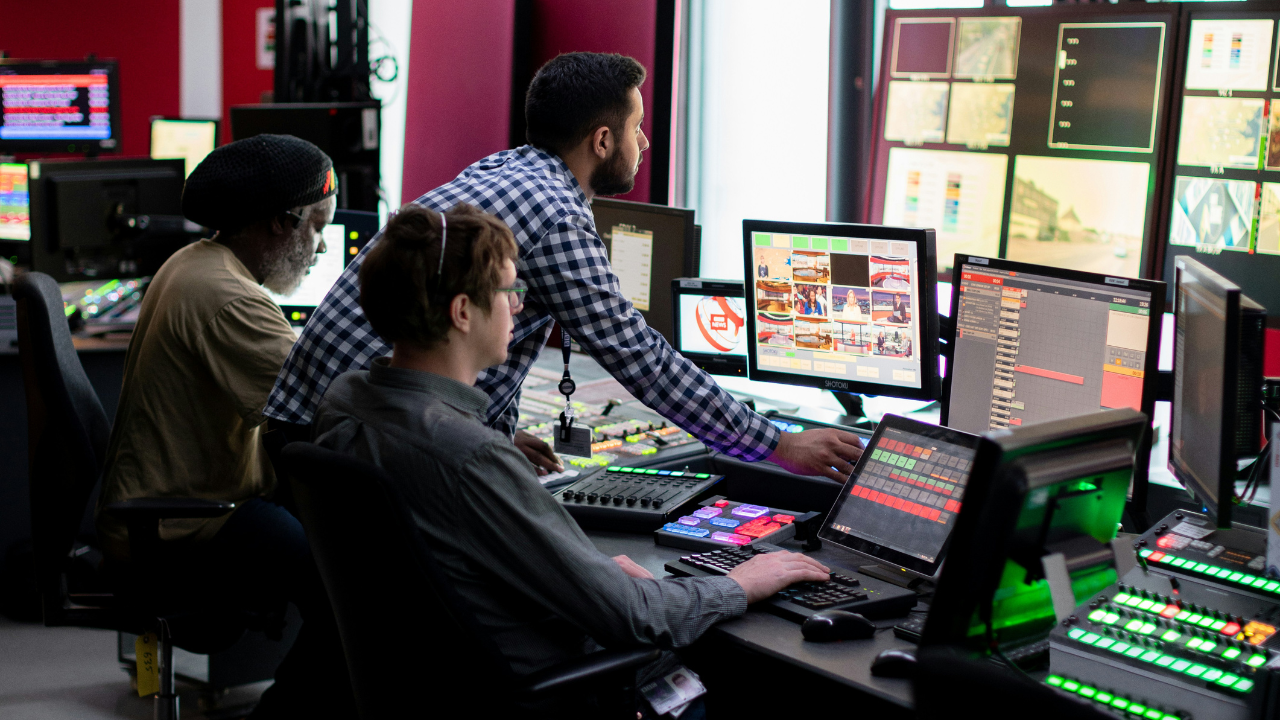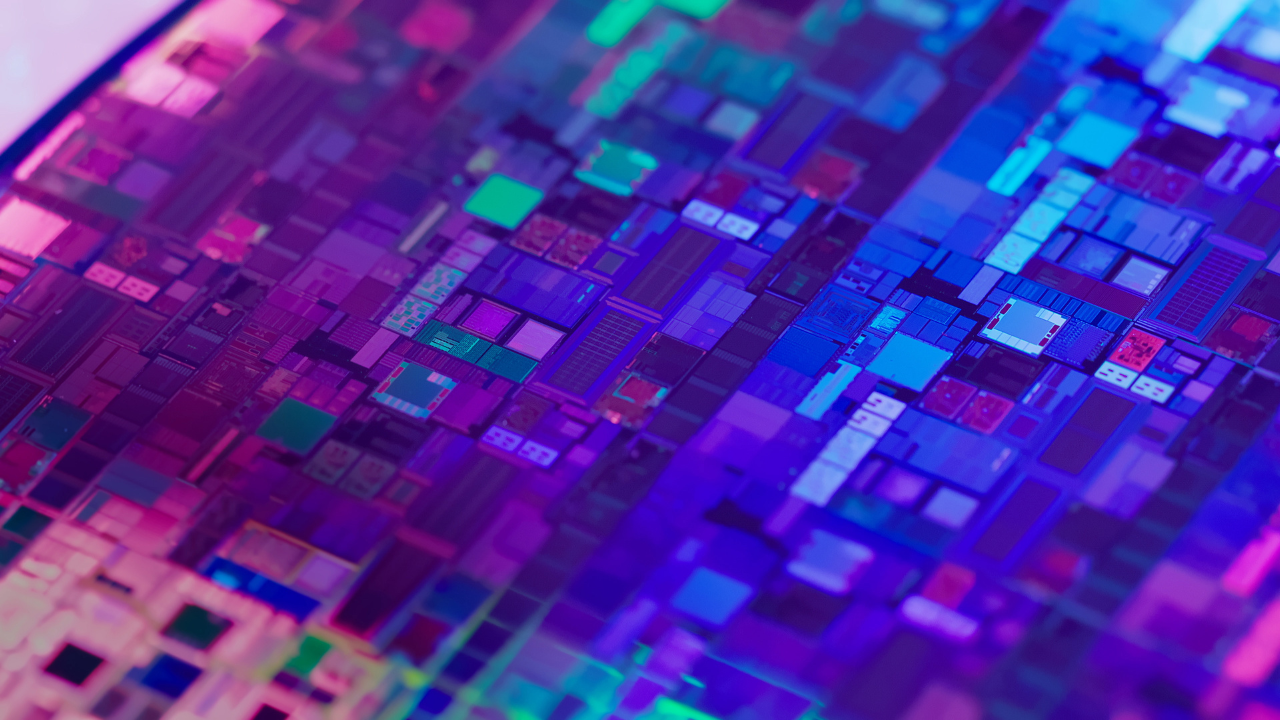As viewers continue to stream and engage more with video, streaming platforms have become pivotal in many industries, such as entertainment, education, fitness, communication, and other sectors. Competition in the space has also increased dramatically, driving these platforms to be innovative as they strive to meet the ever-increasing consumer demands for high-quality, seamless streaming experiences. With this, however, a new set of challenges and opportunities around the total cost of ownership (TCO) has risen. It is forcing financial leaders within streaming platforms to explore ways to reduce spending and increase revenue generation without increasing customer churn. It’s, therefore, critical to understand that the underlying technological framework and associated costs are vital in achieving these financial objectives.
When evaluating the industries, the term “buyer or builder” comes to mind. This is a common phrase that describes platforms that either use pre-existing third-party solutions to get their workflow up and deployed quickly so they can get to market faster (buyer) or build it themselves to maintain control of their tools and feature set (builder). Since financial aspects play a significant role in the choices every platform makes, it’s essential to understand that going the builder route is often connected to a higher risk and can turn quite cost-intensive, whereas being a buyer could lead to a faster platform launch with a predictable budget, allowing to implement monetization strategies such as advertising video on demand (AVOD), subscriber video on demand (SVOD) or a hybrid model between the two.
In this blog, we will highlight what leaders and anyone focused on maintaining and optimizing team budgets can do to reduce their financial obligation and TCO from a technology standpoint. We will discuss the different payment methods that streaming platforms use, the technology that can help them innovate, reduce costs and development time, and how Bitmovin fits into that conversation.
Understanding Total Cost of Ownership (TCO) in Video Streaming
Total Cost of Ownership (TCO) in streaming platforms extends beyond just one number. It encompasses various operational expenses, including (but not limited to) infrastructure provision and maintenance, content delivery network (CDN) fees, licensing costs, and the workforce required for ongoing platform and workflow management. Moreover, TCO is significantly influenced by the platform’s scalability, adaptability to new technologies, and ability to stream content efficiently. It’s not just about minimizing expenses but optimizing spending to enhance value and maximize return on investment.
Maintaining viewer engagement is increasingly expensive for content providers in a fiercely competitive market. They face the challenge of managing costs while still delivering top-notch streaming experiences. This requires striking a careful balance where efficiency doesn’t undermine quality, ensuring the platform’s sustainability and user satisfaction in the long run. Sacrificing quality to meet budget constraints is not an option. Instead, the focus should be on innovative strategies to maximize the streaming workflow’s effectiveness. To illustrate, let’s delve into the financial risks, challenges, and opportunities present in the market.
Financial Risks, challenges, and opportunities within the space:
Financial and product leaders navigate multiple risks, challenges, and opportunities when evaluating potential concerns or objectives. Let’s take a closer look at what they look like:
Financial Risks
- Development costs – Initial and ongoing development expenses for open-source or custom-built solutions can be substantial.
- Infrastructure overspending – Risk of unnecessary expenditure on storage and bandwidth if not aligned with usage.
- Scaling costs – As the audience grows, the fees for scaling up (more bandwidth or storage) can rise sharply.
- Technology dependency – Relying on specific technologies can lead to financial risk if they become outdated or unsupported.
Challenges
- Deployment delays – Technical challenges can arise during the deployment of streaming workflows, increasing costs and delaying any monetary return.
- Infrastructure management – Monitoring and maintaining multiple parts of the streaming infrastructure can be time-consuming and costly for teams.
- Technological evolution – There are always rapid advancements in streaming technology, and depending on the workflow, it could limit innovation and opportunities for further efficiencies in the future.
Opportunities to implement
- Fast Channels – Launching FAST channels or linear streaming can attract a broader audience.
- SVOD – Subscription models provide consistent revenue and help build a loyal viewer base.
- AVOD – Ad-based revenue models appeal to a broader audience by offering free or more affordable content.
- Hybrid Monetization – Combining multiple revenue models into a single service can open up revenue streams in additional markets.
By understanding these financial risks, adapting to any operational challenges, and implementing the right monetization model, stakeholders within these streaming platforms can position themselves for sustainable success and continued innovation in this rapidly evolving market.
Choosing the right pricing model for your needs
When implementing the service, pricing models matter, as the costs can quickly grow if not monitored. There are two main pricing models currently available in the industry:
- Pay-as-you-go (Consumption-based):
- You only pay for the resources you use, such as bandwidth, storage, encoding minutes, and impressions. This means there is no commitment.
- It scales easily to your needs, allowing you to increase or decrease based on actual demand. This is ideal for services starting up without reliable usage data or services with fluctuating viewership.
- This model ensures you’re not locked into paying for unused resources, aligning costs directly with usage levels. However, it usually comes with a higher unit price compared to set consumption contracts.
- Set Consumption Contracts (Commitment Model):
- You agree to purchase a predetermined amount of resources, often at a reduced rate compared to pay-as-you-go pricing.
- This model can offer cost savings for platforms with predictable consumption patterns. Accurate forecasting would help avoid overpaying for unused resources or receiving unexpected bills for overage.
- It suits services with stable, predictable viewership levels, providing budget certainty and potential savings.
When choosing between these pricing models, you must evaluate your viewership patterns, budgetary constraints, and strategic goals to select the one that aligns with your needs and objectives. This ensures a balance between flexibility, cost-efficiency, and scalability in your service delivery.
There are also benefits when buying through a cloud provider where you already have a commitment versus directly from a vendor. Marketplaces such as AWS, Azure, and Google Cloud can help you if you’re already using their services (or want to use a big cloud provider for your global backbone) by accessing solutions that can be beneficial for your workflows and utilize your committed consumption without adding additional costs for the team and minimizing financial burdens.
Boosting workflow efficiency with advanced encoding solutions
Continuing to look at TCO, the efficiency and effectiveness of a platform’s encoding workflow is crucial for maintaining content quality and optimizing costs (check out our blog on this topic). The right encoding partner plays a vital role in this context, assisting platforms in refining their content preparation and ensuring videos are encoded in the correct formats, bitrates, and codecs while supporting the latest features. While open-source VOD encoding options are viable and can be effective for a narrow range of use cases, they may offer limited adaptability and advanced features required for a wide range of scenarios. Bitmovin’s VOD Encoder distinguishes itself by enabling platforms to reduce storage and bandwidth costs dramatically. This is achieved through per-title encoding and the utilization of advanced codecs like AV1 while enhancing the bitrates and video quality through smart chunking and 3-pass encoding capabilities. Bitmovin’s VOD Encoder not only simplifies the transition from production to playback but also ensures that video content, even up to 8K, is encoded in superior quality with optimal compression, making it a robust choice for platforms seeking to elevate their encoding workflow while managing TCO effectively.
Supported aspects and features that help optimize TCO:
- Advanced codecs, which Bitmovin supports, include the latest in the industry, such as AV1, VP9, HEVC-265, and others.
- Per-Title Encoding is the automatic selection of the optimal bitrate ladder for each piece of content, which helps to minimize storage and bandwidth costs.
- Smart Chunking enhances the quality of processed content by intelligently allocating bitrates throughout each asset and respecting scene boundaries, ensuring the highest quality is continuously streamed.
- Split and Stitch – separates each file-based asset into smaller segments and makes content available up to 100X real-time.
- Multi-Pass Encoding (2-Pass and 3-Pass): Up-front analysis to achieve the perfect balance of quality and file size tailored to specific use cases.
Additionally, Bitmovin’s approach to encoding, which integrates horizontal and vertical scaling within its cloud-agnostic infrastructure, exemplifies its commitment to innovation and efficiency. With their horizontal scaling, streaming platforms can scale the distribution of encoding tasks across multiple nodes and spin up new instances as needed, enhancing speed and handling numerous jobs simultaneously, while vertical scaling optimizes the processing capabilities of each node for complex tasks. This is bolstered by Bitmovin’s Cloud Connect solution, ensuring flexibility and scalability through seamless cloud integration, enabling streaming platforms to utilize the Bitmovin VOD Encoder within Bitmovin’s Cloud environment or on their cloud infrastructure within one or more of the major cloud providers.
To showcase how Bitmovin’s VOD Encoder helps reduce TCO for streaming platforms further, our case study highlighted by Forrester underscores our impact. The report shows companies saving over 355% by leveraging Bitmovin’s solutions. This result alone highlights Bitmovin’s role as a leading encoding solution provider and a vital partner in the future-proofing and economic optimization of video processing for streaming platforms.
Enhancing the efficiency of live streams
Live encoding is essential for delivering captivating real-time content and reaching audiences worldwide. While open-source and other solutions offer a good starting point with flexibility and cost advantages that benefit TCO initially, they fall short in the long run. Depending on the use case, these solutions can present challenges in scalability, reliability, and the need for significant customization, which can lead to unforeseen expenses and resource allocation, particularly when streaming multiple events concurrently. The complexity of managing these systems increases as viewership grows, as does the necessity for continuous maintenance and technical support, which can significantly inflate costs and detract from core business objectives.

Diagram of Bitmovin’s Live Encoder Workflow
Compared to the above, Bitmovin’s Live Encoder offers a more efficient, cost-effective solution that enhances financial possibilities with its SCTE-35 support for live ad insertion and leverages deployments with cloud partners that have optimized delivery networks for media distribution, such as Akamai. Its integration across every major cloud platform enables seamless scalability to meet live encoding needs, allowing global stream availability and delivery with exceptional quality and minimal latency, the key to maintaining audience engagement. This is possible on the platform’s private, secure cloud infrastructure with our cloud connect feature or can be done on the Bitmovin cloud environment, simplifying cloud infrastructure management and minimizing the need for extensive in-house technical expertise.
Additionally, platforms can dynamically deploy live streams on the fly, from ad-hoc event-based to continuous 24/7 streams, using a pay-as-you-go consumption-based pricing model. This ensures you can adapt quickly to changing demands without incurring unnecessary and excessive costs, giving you the tools to lower your financial risks and enhance TCO.
A player solution that maximizes reach and viewer experience
The video player is an essential part of the video workflow, serving as the final touchpoint in delivering content to viewers. While open-source and native players offer viable and often license-free options, their support and integration can dramatically increase development demands, resulting in higher TCO and hidden financial burdens. Development teams frequently face significant hurdles related to player maintenance, cross-platform compatibility, and feature development, as well as being limited by the architecture of the base player. Additionally, open-source players rely on community-based support, which is great for side projects, but with no SLA for response times, any issues can take much longer to resolve.
In contrast, Bitmovin’s Player mitigates these support and maintenance challenges while accelerating time-to-market and expanding viewer reach. Bitmovin’s Player enables platforms to launch quickly across the broadest range of devices, significantly cutting deployment time and empowering streaming platforms to generate revenue faster. Thanks to regular updates from Bitmovin’s engineering team, our Player’s broad device support and reduced maintenance needs free up internal resources to focus on core business objectives and create more customer value. Moreover, with Bitmovin’s Player, streaming platforms can avoid the extensive development and hours of troubleshooting typically required with open-source and native solutions by leveraging pre-built features and expert support to streamline deployment and enhance viewer experiences across diverse streaming models. This is especially true regarding the native platforms, as Bitmovin’s Player helps save over 600 hours annually in baseline maintenance only.
Some of the supported platforms for the Bitmovin Player
- Web browsers
- Apple mobile devices and Apple TV
- Android mobile devices and Android TV
- Apple Vision Pro and other VR headsets
- Samsung, LG, Hisense, Vizio, Panasonic, and other smart TVs
- Roku, Amazon Fire Stick, Chromecast, and other connected devices
- X1, Sky Q, Foxtel, Android, and other set-top boxes
- PlayStation and Xbox gaming consoles
- React Native
- Flutter
Bitmovin also allows streaming platforms to test streams on physical devices with its Stream Lab feature to expedite pre-deployment testing. With the Bitmovin Player, platforms can test their streams on physical target devices in natural streaming environments with complete test reports and quality of experience metrics. Lastly, with a robust API set and out-of-the-box features such as ad modules, adaptive bitrate streaming, customizable UI, and offline playback, coupled with pre-integrations for Bitmovin’s Analytics and more, platforms are equipped with the tools necessary to implement their chosen monetization model effectively, enhancing viewer engagement and revenue generation opportunities.
Gain streaming insights and optimize workflows with the right video Analytics
Streaming platforms need to collect and analyze vital playback data to get the complete picture of how their content is streaming and to understand their workflow efficiency. This analysis is essential for pinpointing service issues, measuring audience engagement, and enhancing overall service performance to help them retain their user base and avoid churn. With these insights, they can identify and remedy specific streaming challenges by pinpointing those with the highest impact, such as reducing buffering, player load times, video start delays, ad playback issues, poor playback quality, errors, and more. These data points are critical to ensuring the efficient use of internal resources and guaranteeing an enjoyable viewing experience while avoiding any issues with revenue generation from specific streaming models like fast channels or AVOD.
This is precisely what Bitmovin’s real-time Analytics empowers platforms to do, as they can track events across every Player deployment (with the Bitmovin Player and open-source), enabling them to analyze actionable information and prioritize their resources on the areas that have the most significant impact on audiences. They can also proactively address playback issues before they affect audiences and fine-tune their streaming service for an optimal viewer experience in real-time. Some of the metrics tracked with Bitmovin Analytics include:
- Quality of Experience
- Quality of Service
- Error Tracking
- Stream Performance
- Ad Engagement
- Audience Engagement
- Real-time Monitoring
- Data Portability
- Granular Session Data
Bitmovin’s Analytics fits seamlessly into major data architectures as it allows multi-faceted access to data via UI, API, and structured exports, enabling integration and correlation with other data analysis tools, both homegrown and commercial. Moreover, this data informs strategic decisions, guiding content selection, efficient streaming service improvements, and advertising efforts to meet viewer preferences and trends. Additionally, the new AI feature in Bitmovin’s Analytics (Debuting at NAB) makes it so anyone (technical to non-technical) can view the data and understand how to optimize their streams for a better experience, further showcasing how it improves overall TCO.
Conclusion
As the streaming industry continues to evolve and expand, understanding and managing total cost of ownership (TCO) becomes increasingly crucial for business leaders seeking to innovate while maintaining financial viability. The choice between building in-house solutions or adopting third-party technologies like Bitmovin’s suite of tools can significantly impact a platform’s agility, quality of service, and bottom line. Bitmovin’s solutions, from its Live Encoder to its Player and Analytics, offer a way to address the immediate challenges of delivering high-quality, engaging content and strategically position yourself for sustainable growth and success in a competitive marketplace.
Bitmovin’s advanced encoding solutions, cloud-agnostic live encoding capabilities, and comprehensive analytics provide you with the tools you need to optimize your workflows, enhance viewer experiences, and make informed decisions that drive revenue and growth. By leveraging these technologies, you can minimize your TCO while maximizing your reach and impact, ensuring you can quickly adapt to market changes and viewer demands. In a landscape where viewer expectations are constantly rising, having the right technological partners is more than just a tactical choice, it’s a strategic necessity that can define a platform’s trajectory and success in the streaming ecosystem.




